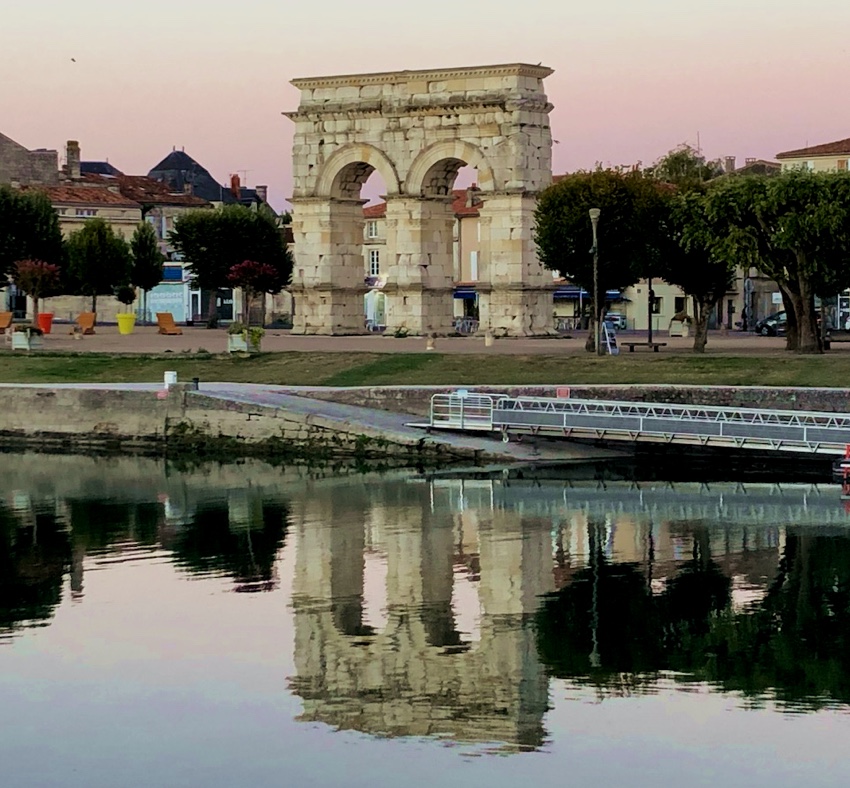 Having had my trip to ‘Roma Nova’ cancelled in June, I was thirsty for some Roman input. But it’s not easy going on a trip in the middle of a raging world pandemic.
Having had my trip to ‘Roma Nova’ cancelled in June, I was thirsty for some Roman input. But it’s not easy going on a trip in the middle of a raging world pandemic.
However Saintes, in Charente Maritime, is only two hours by fast autoroute from where I live and still in the green zone with a low infection rate. And it’s been on my bucket list of Roman sites in France. Founded around 20 BC on a settlement already established by the Santones tribe, it became a significant town in Gallia Aquitania.
So, we booked five days in a town centre hotel in the historic quarter of Saintes from which we could explore everything on foot.
The evening we arrived, the Arch of Germanicus by the River Charente greeted us. It was built in AD 18 or 19 by a rich citizen of the town, C. Julius Rufus, and dedicated to the emperor Tiberius, his son Drusus Julius Caesar, and his adoptive son Germanicus and originally sited over the terminus of the via Agrippa from Lugdunum (Lyon) to Saintes.
In 1843 the author Prosper Mérimée lobbied to save it from destruction during works on quays and it was moved fifteen metres along the river bank to its present site and restored in 1851. As a respected archaeologist and the inspector of French historical monuments, Mérimée was responsible for the protection of many historic sites, including the medieval citadel of Carcassonne and the restoration of the façade of the cathedral of Notre-Dame de Paris.
Roman Saintes
In addition to the Via Agrippa to Lugdunum, Mediolanum Santonum was linked by road to Burdigala (Bordeaux), Limonum (Poitiers) and Vesunna (Périgeux). A large port, Portus Santonum, described by Ptolemy, has disappeared but it’s suggested that it could have been located to the south near the Gallo-Roman site Barzan (Novioregum), also disappeared and described in the Itinerary of Antoninus.
As these things go, Mediolanum Santonum declined fairly rapidly: it lost its status as the capital of Aquitaine in favour of either Poitiers in the second century, and Bordeaux in the third.
In the upheavals of the third century, the city retrenched behind a rampart confined within a loop of the River Charente. When they built these defences, the ever practical inhabitants used materials from the old Roman forum and other ancient buildings, including the amphitheatre. The successive barbarian invasions caused the city to retreat further, but the decline was relative, especially in terms of intellectual life: the Bordeaux poet Ausonius is said to have owned and still occupied a villa near the city in the 390s.
According to tradition, the first Christian community in the city was founded by Eutropius, who was martyred under Emperor Decius in the middle of the third century. However, it seems more likely that the town and area was Christianised over the course of the 3rd and 4th centuries.
The next day we were off to the theatre, well, the amphitheatre actually. Although a lot of building material was used for the later town walls, the site is reasonably intact. And it’s big! The arena itself measures 66.50 metres long by 39 metres wide.
Construction started during the reign of Tiberius (AD 14-37) and finished under Claudius (AD 41-54).
Much of the seating is overgrown and the site was pillaged all through the medieval period for stone, but here and there you can see original brickwork and a glimpse of the balteus (rim) and other details.
At one end of the amphitheatre is the porta sanavivaria through which gladiators and animals entered ready for battle. If they were lucky enough to survive the content, they exited through the same doorway. However, if they died, they were despatched through the porta libitinensis (named after Libitina, the goddess of death, corpses and funerals). Although now blocked up at the end, I felt compelled to go into the death door… It felt very cold and several somethings flapped wings. I took my photo and marched out pronto.
Still the amphitheatre was very impressive and you did feel ant-like looking down from the top to the arena itself.
Back in the town, a rather contrived but pretty courtyard made up of Roman bits and pieces led to a small archaeology museum. (The floor inside the modern building at the back did look genuine.)
Of course, it was the glass and pottery that attracted me, but a tiny chest the size of a jewellery case and a collection of intricate keys were impressive. And that bucket!
The baths to the north of the town, les Thermes St-Saloine, are still being investigated as they are a bit of a mystery. Converted into a church in the late Roman/early medieval period, they have caused archeologists to come up with different theories about the different rooms. The jury is still out, but some parts are clear. I had fun trying to guess what everything was, but a drain was obvious as was a hypocaust entrance. But whatever anything was, the site was extensive.
We did look at some of the later historic buildings and if any medievalists would like photos, I have them, but of course, it’s the Roman that most appeals. And in Saintes you keep falling over things on a walk by the river or the way back from the restaurant. We know the Romans were expert and prolific leavers of ‘stuff’ all over Europe and the East, even if it’s now squashed between modern buildings. And you just have to go and look more closely even if it’s just an old bit of wall and a drain…
(Maps as marked from the fabulous Mediolanum-Santonum.fr site by Romain Charrier; photos and video by author)
Alison Morton is the author of Roma Nova thrillers – INCEPTIO, PERFIDITAS, SUCCESSIO, AURELIA, INSURRECTIO and RETALIO. CARINA, a novella, and ROMA NOVA EXTRA, a collection of short stories, are now available. Audiobooks are available for four of the series. NEXUS, an Aurelia Mitela novella, is now out.
Download ‘Welcome to Roma Nova’, a FREE eBook, as a thank you gift when you sign up to Alison’s monthly email newsletter. You’ll also be first to know about Roma Nova news and book progress before everybody else, and take part in giveaways.




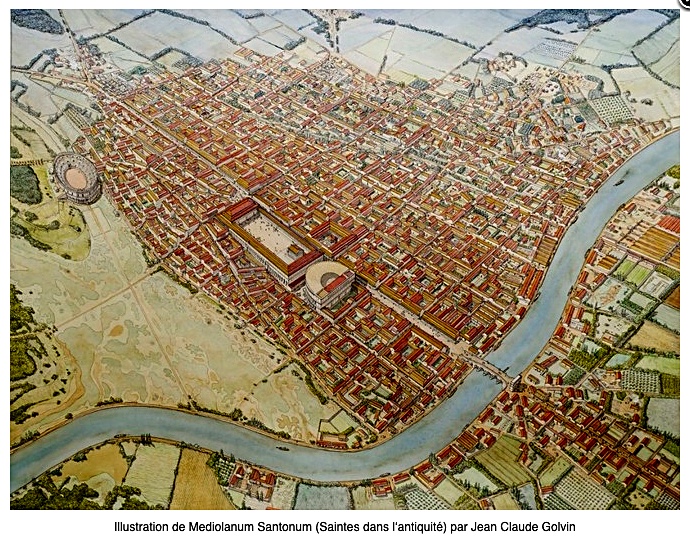
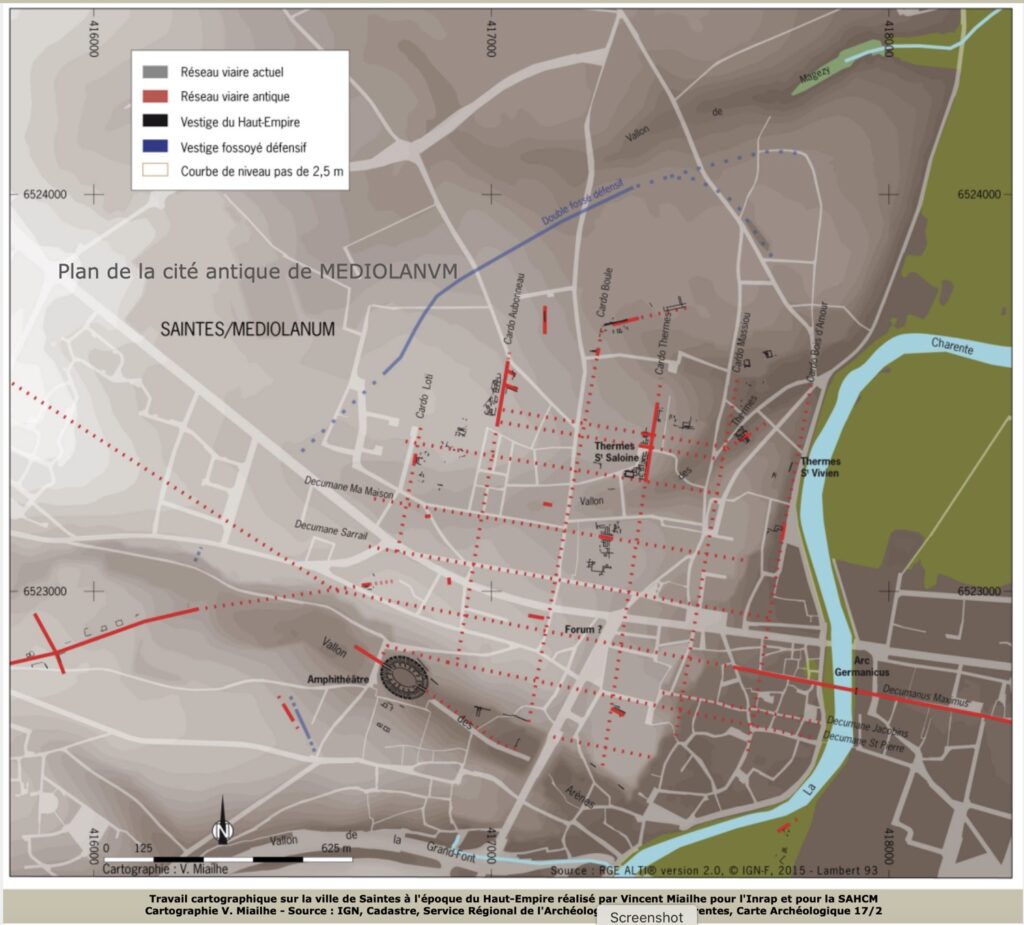
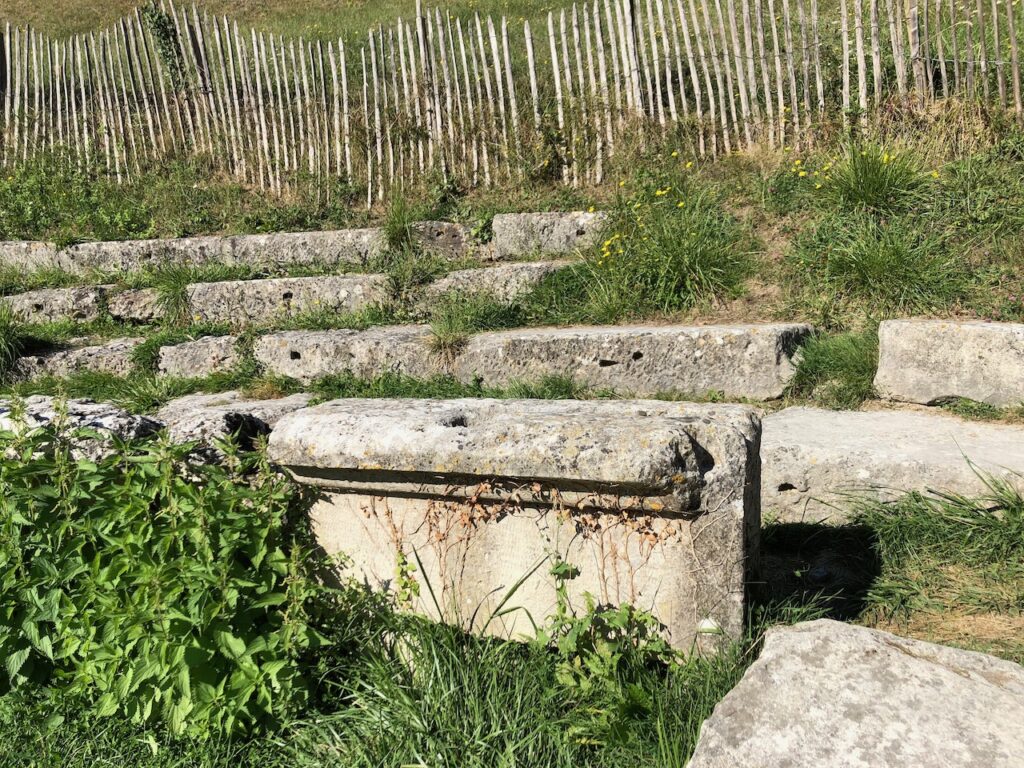

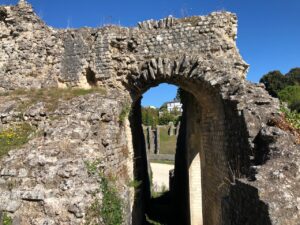
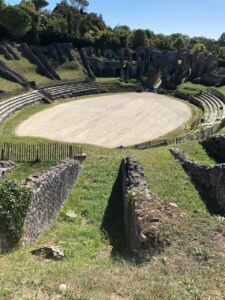
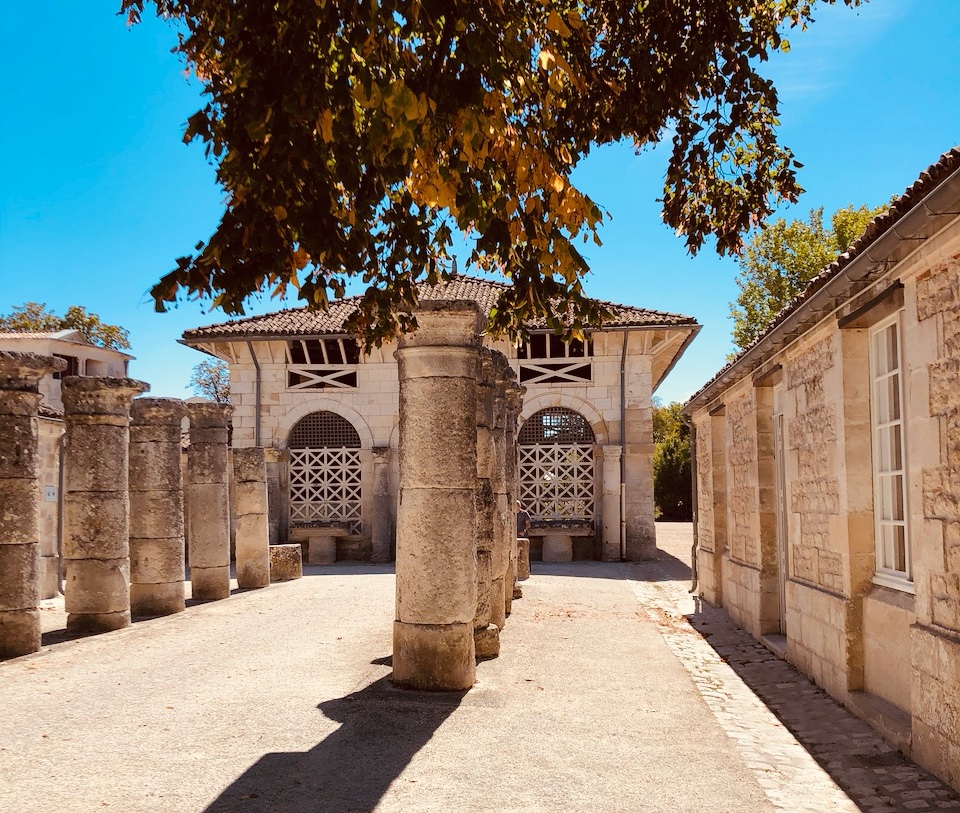
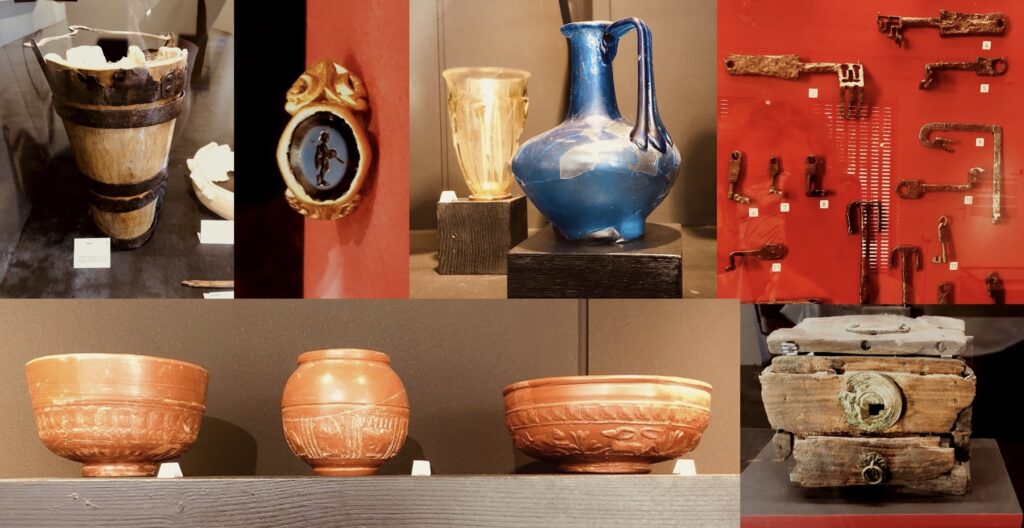
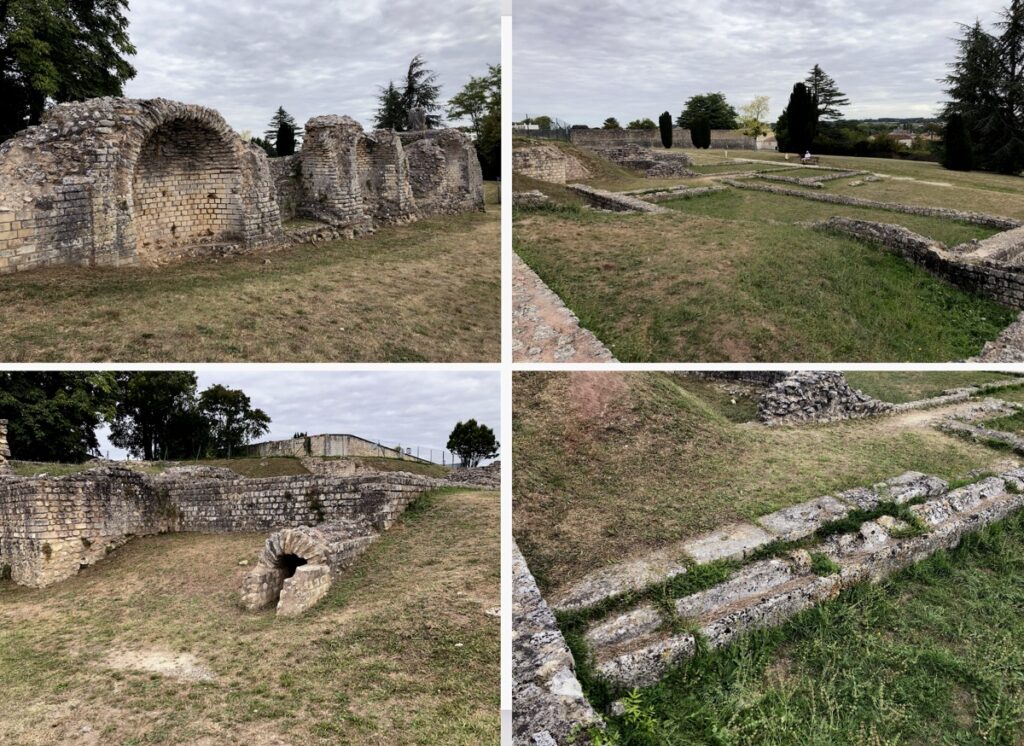
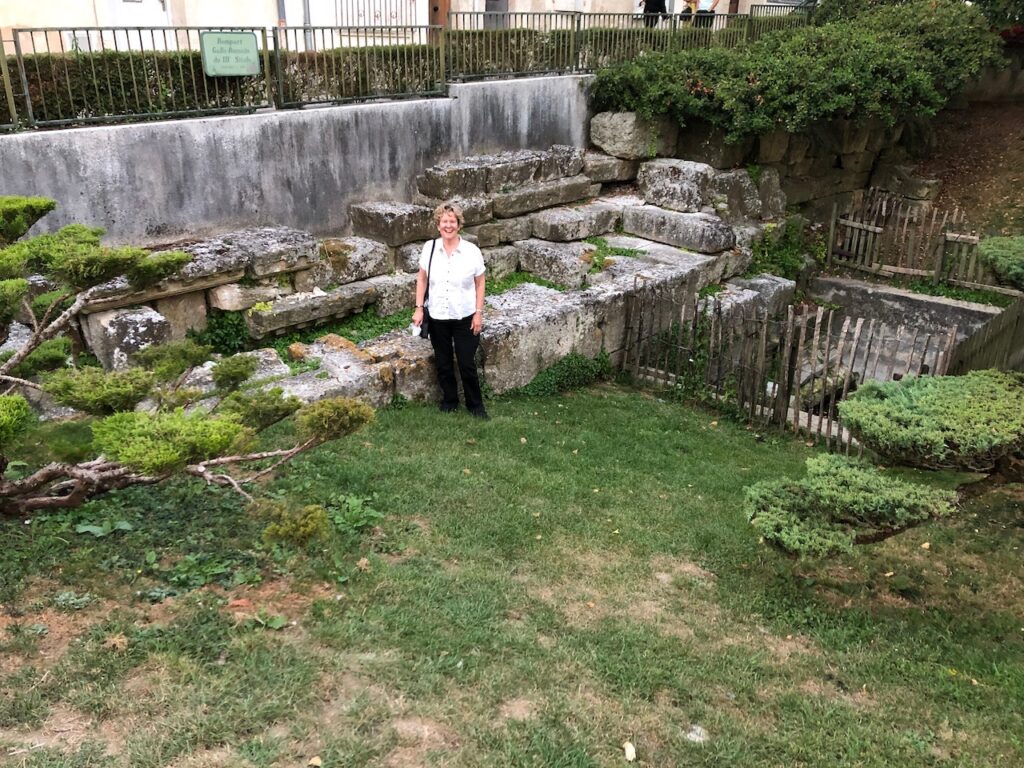









Leave a Reply